The British Academy supports a number of overseas research institutes, including the British School at Rome. Since 1913, the BSR has developed a program of visual art awards that enables artists to focus on their work away from the normal pressures of UK life. By providing board and accommodation in purpose-built studios, artists are encouraged to explore Italy and to develop their work in response to the cultural heritage they encounter.
Several BSR past award holders currently have work on display at the British Academy. In the pieces below, Carol Robertson and Phil Allen talk about their work and their experiences at the BSR. And, Vivien Lovell, Chair of the BSR Faculty of Fine Arts, explains the importance of the awards and how the artworks came to be displayed at the Academy.
Carol Robertson:
"I came to the British School at Rome in 1993 as an Edwin Austin awardee. I was a young artist, fresh from a recent post graduate in Fine Art-Painting at Chelsea School of Art. It was in Rome that I consolidated and refined my practice as a non-figurative artist, developing a life-long affinity with exploring geometric form through painting.
Throughout my career I have chosen to use the square, rectangle and circle for their ideal power, for their aesthetic beauty. I went to Rome to look at architectural form and detail and found it to be a city of circles. Artists are often selective in what they see and for me the circle was omnipresent in Rome: it’s power undisputed within the great classical archaeological sites, in churches, in the planning of private and public spaces, and everywhere in decorative detail. Then and now I have no wish to precisely record the way the world looks, but my work is never disconnected from it. In Rome I found a way to connect what I was looking at with the reductive inclination of my work. I continue to make informal relationships with landscape, architecture, nature and the environment. I find my work evolves in tandem with whatever is happening in my life, emotionally, spiritually, intellectually and physically.
I live and work in London but the early experience of working in Rome gave me a desire to travel and frequently work abroad. Away from the familiar routine of home I find my senses are sharp and my thinking focussed: fresh ideas and new stimulation always feed the work. For nearly twenty years I have been a Returning Fellow at the Ballinglen Arts Foundation in Co. Mayo, Ireland. In 2012 I was artist in residence at the Kunstgarten in Graz, Austria, where I made 3D objects for the first time. In 2014 I published Carol Robertson + Trevor Sutton - French Paintings in response to a series of shared residencies in the Midi Pyrenées. A recent trip to Central America to look at Maya art and archaeology resulted in sets of monoprints named Edzná and Copán after visiting two important Maya sites in northern Mexico and western Honduras respectively.
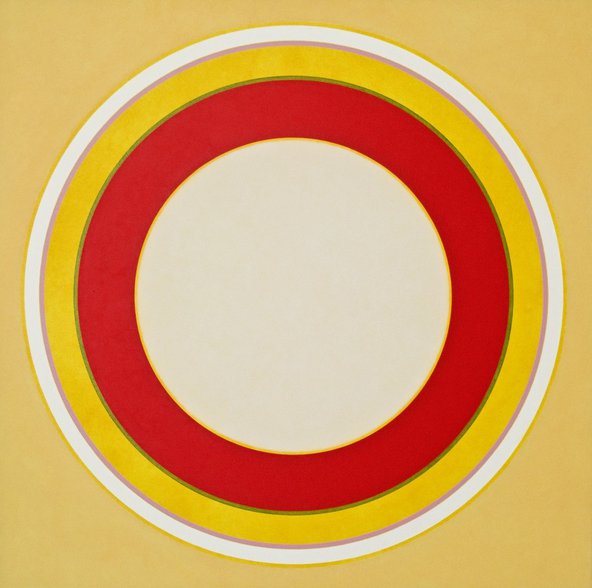
The power and beauty of geometric form and detail provides me with a catalyst for ways to make art. Adopting the formal restraints of a reductive and often repetitive geometric language takes the chaos out of what otherwise would be an impossibly vast set of visual options upon which to pin my existence. Geometry allows me to concentrate on the essential. It allows me the freedom to channel sensory or poetic material through its refined parameters.
The circle is the most archetypal of all the forms I use: it has a universal resonance, so frequently found in art, architecture and ritual: an evocation of the universe and the heavens: the journey inwards, or outward, to or from the centre: a symbol of wholeness, completion and infinity: the unbroken line with no beginning or end: the eternal cycle.
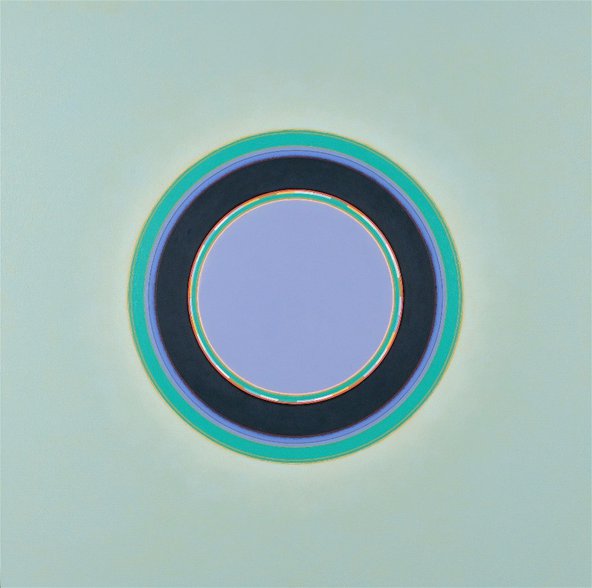
The two paintings on display in the British Academy are both circle paintings, Lux and Natural History. Both are oil on canvas and both emphasise the centrifugal power of colour to harness radiant light. I use colour in a subjective and instinctive way, often over-painting several times to fine tune the balance and effect each colour has upon another. For me colour holds associative and personal connections ...it feels analogous with music, a very direct way to reach senses and emotions."
Carol is represented by Flowers Gallery in UK and USA
Phillip Allen:
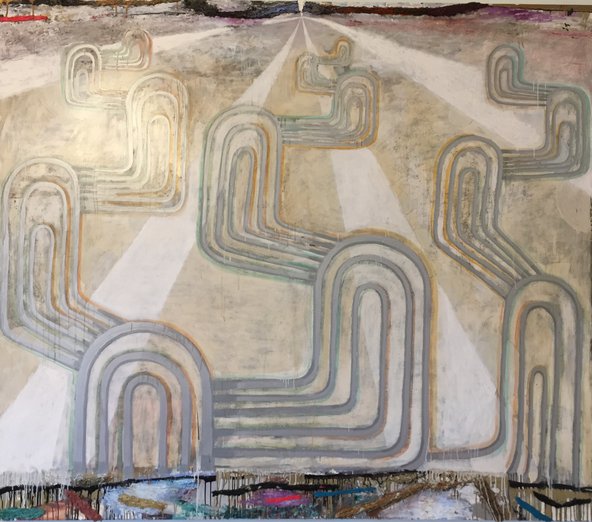
"Being a Rome Scholar was a huge privilege. It was an experience that changed my outlook of my practice, as well as my thoughts about paintings.
Over my three-month scholarship, I had the luxury of time to look at objects and art pieces from antiquity, up to the Renaissance and the Baroque. The mix of artists with classicists and historians at the School sparked some interesting discussions I wouldn’t normally be part of: scholarly conversations about the amount of wood required to burn a heretic to the difference in brick types from particular periods in Roman history.
I’m delighted Low Down of the Slow Down hangs in the British Academy. I painted it while applying for the scholarship, and it distills my interest in the Baroque and especially Correggio – passions I could pursue in Rome, and which interest me still."
Vivien Lovell:
"Being in residence at the British School at Rome changed my life" – these or similar words are uttered time and again by artists selected for awards to the BSR. For many of the artists, whether their award is for three months or longer, this intensive experience is today’s equivalent of the Grand Tour. As Tania Kovats said, her experience at the BSR was ‘a crash course in civilisation’. Living and working alongside Humanities scholars develops synergy between disciplines and gives rise to collaborative projects.
Dawn Adès, FBA and Chair of the British Academy’s Art Committee, approached me to discuss the possibility of artworks by BSR alumni being loaned to the Academy - the home-base of the BSR in the UK. With my fellow Fine Arts Faculty members Sacha Craddock and Penny Johnson, we chose a longlist of artists and potentially available artworks for consideration. Given that virtually all the proposed locations are walls, painting, lens-based art and reliefs are most easily displayed, although of course BSR artists also create film and video, installation, sculpture, ephemeral and performative art.
Of the nine artists selected for loans to the Academy, five were funded through the generosity of the Abbey Trust, which like the Derek Hill and Augusta awards, focuses on painting. The Mall Room provides a great setting for new loans of work by Phil Allen, Dragica Carlin, Stuart Cumberland and Carol Robertson.
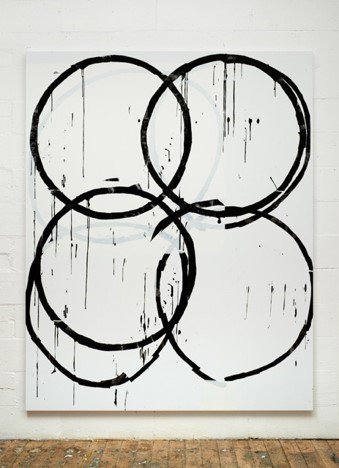
The fact that the Fine Arts and Architecture residencies fall outside the BSR’s core funding has always seemed to me an anomaly; not only were the Fine Arts, along with History and Archaeology, firmly within the BSR’s charter from its inception, but they are also research- and practice-based academic subjects. Today's artists and architects create work that tomorrow’s Humanities scholars will study. Lack of core funds for the Fine Arts and Architecture means that fundraising for awards is continually necessary, as virtually all of the grants are for fixed-term periods and have to be renegotiated or come to an end. The Abbey Trust and the Linbury Trust (for the Sainsbury Fellowship) have provided valuable continuity. We are also grateful to private patrons for the Rome Fellowship in Contemporary Art and the Rome Scholarship in Architecture. Surprisingly, only two of the four UK Arts Councils, Creative Wales and Northern Ireland, currently offer their artists the opportunity to work in Rome.
The Fine Arts awards are selected from an open call, with each attracting up to 200 applicants. Ten images or an equivalent showreel are submitted, and new talent is uncovered continually by the Fine Arts Faculty carefully reviewing these applications. Established practitioners apply, but the majority of applications are from emerging and mid-career artists.
Public and private sources also support a number of artists from Australia, New Zealand and Canada. We’re now keen to explore opportunities for artists and architects from other parts of the Commonwealth."
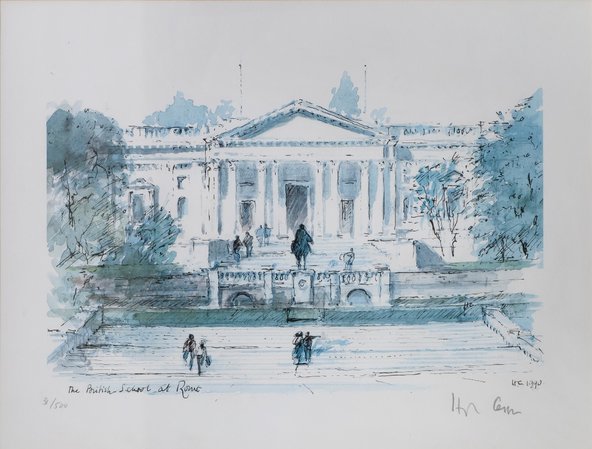
Other BSR alumni on display at the British Academy include: